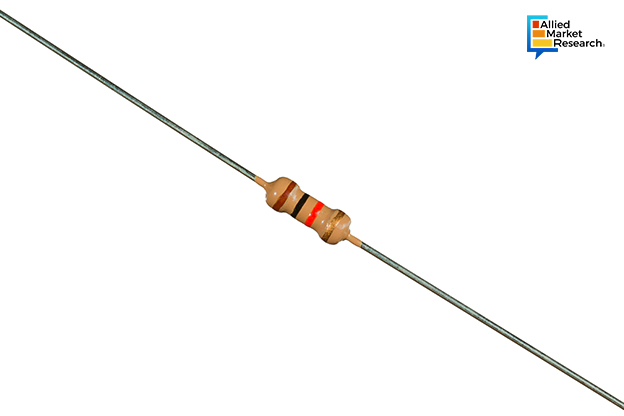A Brief Overview of the Various Advantages of Carbon Resistors and the Factors Influencing the Rise of the Industry

18 Oct
2023
A resistor is an electrical component whose primary function is the offer resistance in an electrical circuit. The most commonly used resistor is the carbon resistor which is made using a carbon powder and ceramic mixture. Having a cylindrical structure, the resistor has metal end caps or embedded wire leads. Also, the cylindrical structure made from carbon powder and ceramic is covered using plastic to protect it from heat.
Advantages of carbon resistors
Carbon resistors are one of the most groundbreaking inventions in the world of electronics. Right from the 1960s to the present day, carbon composition resistors have been used in electrical circuits as an efficient resistance-offering component. The advantages of these resistors are the main reason behind this sustained usage. The primary advantage of carbon composition resistor over other types is its capacity to tolerate high energy signals which are generated due to flow of electrical current.
Another important advantage of carbon composition resistors is that they offer higher resistance as compared to wire-wound resistors and are comparatively cheaper than other types. In fact, carbon resistors with different resistance values are available in the market, ranging from 1 ohm to 22 mega ohm. The resistance of the carbon resistor depends on the cross-sectional area of the cylinder, the length of the cylinder, and amount of carbon present in the cylinder. Thus, various resistors of different values can be easily manufactured by altering these three parameters. The footprint of these resistors on circuit boards is also minimal, which is why accommodating different components on the circuit becomes possible. The stray capacitance, power dissipation, and inductiveness are pretty low which helps in increasing the efficiency of the circuit. Hence, even if modern-day “smart” electronics make use of advanced resistors, many of the common consumer electronic goods like toys, clocks, radio sets, etc., make use of these resistors regularly.
Factors influencing the market
One of the important factors driving the growth of the global carbon resistor market is the wide applicability of carbon composition resistors. These resistors are extensively used in different end-use industries including consumer electronics, automobile manufacturing, healthcare, aerospace and defense, etc. As these end-use industries have amplified their operations, the demand for carbon composition resistors has also multiplied. The advantages of carbon composition resistors make them the go-to choice as far as the consumer electronics industry is concerned. Owing to the collective impact of these factors, the global carbon resistor market is anticipated to rise at a CAGR of 5.6% during the 2023-2032 period.
The growth in digitalization and birth of “smart” electronics might strengthen the position of the market in the next few years. The expanding network of 4G and 5G cellular services and product launches by leading companies in the market have played a huge role in improving the reach of the market. For instance, RCD Components, in July 2023, announced the launch of carbon matrix resistors. As per the company’s statement, these new-age resistors will address all the moisture-related problems effectively and offer stability to the electronic circuits.
In summary, the global carbon resistor market is set to grow massively owing to the wide applicability of these resistors and the numerous advantages they provide. Moreover, product launches by key players of the industry are expanding the scale of the industry exponentially.

Koyel Ghosh
Author’s Bio- Koyel Ghosh is a blogger with a strong passion and enjoys writing in miscellaneous domains, as she believes it lets her explore a wide variety of niches. She has an innate interest in creativity and enjoys experimenting with different writing styles. A writer who never stops imagining, she has been serving the corporate industry for the last five years.
Avenue: Entire Library membership of Allied Market Research Reports at your disposal
- Avenue is an innovative subscription-based online report database.
- Avail an online access to the entire library of syndicated reports on more than 2,000 niche industries and company profiles on more than 12,000 firms across 11 domains.
- A cost-effective model tailored for entrepreneurs, investors, and students & researchers at universities.
- Request customizations, suggest new reports, and avail analyst support as per your requirements.
- Get an access to the library of reports at any time from any device and anywhere.
Related Post
-
How are Submarine Cables Transforming Global Connectivity with Enhanced User Experience?
-
Endoscopy Procedures: Transformations in Techniques and Applications
-
AI-Powered Video Analytics: How the Product Actually Works for enterprises
-
Painting Robots: Transforming Precision Coating and Creative Applications
-
Innovations in Pharmacovigilance Systems Advancing Patient Safety
-
Understanding Edge Security: Keeping Data Safe Near the Source
-
Exploring the Use and Advancements of 3D Laser Scanners in Professional Applications
-
Reinforcing Industrial Controls with Smarter Tools and Training








